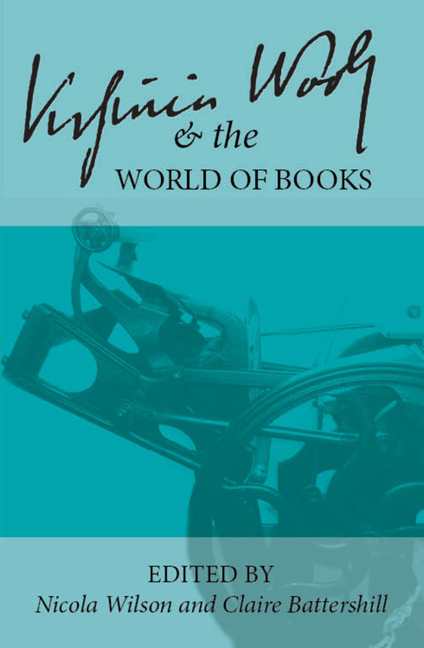 Virginia Woolf and the World of Books
Virginia Woolf and the World of Books Book contents
- Frontmatter
- Contents
- Introduction
- List of Abbreviations
- Keynote
- In the Archives
- Craftsmanship
- The Hogarth Press
- “obscure, indecent and brilliant”: Female sexuality, the Hogarth Press, and Hope Mirrlees
- After the Deluge, The Waves
- Alternative Histories: Hogarth Press's World-Makers and World-Shakers Series
- The Hogarth Press, a Singular Art Gallery
- Hours in A Library
- The Art of the Book
- The Art of the Narrative
- Making New Books: Creative Approaches
- The Book in the World: Woolf's Global Reception
- Editing and Teaching Woolf
- Intertextuality
- Lives in Writing
- Notes on Contributors
Alternative Histories: Hogarth Press's World-Makers and World-Shakers Series
from The Hogarth Press
- Frontmatter
- Contents
- Introduction
- List of Abbreviations
- Keynote
- In the Archives
- Craftsmanship
- The Hogarth Press
- “obscure, indecent and brilliant”: Female sexuality, the Hogarth Press, and Hope Mirrlees
- After the Deluge, The Waves
- Alternative Histories: Hogarth Press's World-Makers and World-Shakers Series
- The Hogarth Press, a Singular Art Gallery
- Hours in A Library
- The Art of the Book
- The Art of the Narrative
- Making New Books: Creative Approaches
- The Book in the World: Woolf's Global Reception
- Editing and Teaching Woolf
- Intertextuality
- Lives in Writing
- Notes on Contributors
Summary
Confronting the rising Nazi threat in Europe and Britain in July 1937, the Hogarth Press published four short biographies under the series title World-Makers and World-Shakers. The choice of subjects appeared random, ranging over centuries, disciplines and nationalities from Socrates and Joan of Arc to Darwin and Italian Risorgimento figures—Mazzini, Garibaldi and Cavour. Perusal in the Hogarth Press archive of Leonard Woolf 's initial solicitations to prospective writers reveals that the final biographers (not Woolf 's first choices) were either friends of Leonard and Virginia Woolf, previously published Hogarth authors, or popular writers likely to appeal to a broadly middlebrow public. In retrospect, both the subjects and their biographers suggest the Woolfs’ commitment to a new genre with a pedagogical purpose, one particularly pertinent given the imminent threat of Fascism. Juvenile biography with its target audience of twelve-to-sixteen year-olds offered humane historical models to counter the ominous contemporary political movers and shakers in Germany and Italy as well as the patriarchal and dictatorial figures Woolf would deride in Three Guineas. Closer to home, the series provided counter-examples to Oswald Mosley and his British Union of Fascists’ advocacy of a “masculinist ethic” in elementary and secondary education. In keeping with the anti-Fascist premise, Leonard Woolf asked artist and radical political activist John Banting to design the dust jacket for the four biographies. Louisa Buck described the illustration as “a tree transforming itself into a linear classical nude on the four volumes…,” and she and J. H. Willis concur that the covers strongly suggested a surrealist influence.
In a 23 April 1936 letter to Commander Stephen King-Hall, Leonard Woolf elaborates on the original prospectus for the series, expressing his preference for teaching history through biography instead of by rote through the “source method”:
I suggest that the subject of these biographies should be people who influenced the course of history, either through what they did, or through what they were: for this purpose they may be admirable, or the reverse; they may have been the active innovators of change, or the passive resisters to it. They should be people whose lives were sufficiently eventful to make a good story. Their names should be familiar enough to young people to make them want to read about them, but not so familiar through school histories and textbooks as to seem too much like lessons. (HPA MS 2750/579)
- Type
- Chapter
- Information
- Virginia Woolf and the World of BooksSelected Papers from the Twenty-seventh Annual International Conference on Virginia Woolf, pp. 83 - 92Publisher: Liverpool University PressPrint publication year: 2018


